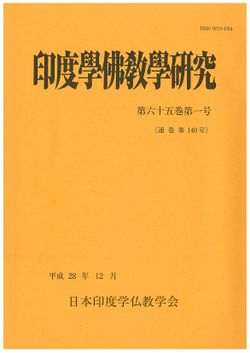Indogaku Bukkyōgaku Kenkyū
About The Japanese Association of Indian and Buddhist Studies:
- With its current membership standing at over 2,400 people, The Japanese Association of Indian and Buddhist Studies (JAIBS) is one of Japan’s largest academic associations in the Humanities and Social Sciences. Since it’s inception at the University of Tokyo on October 15, 1951 (the 26th year of the Shōwa era), we will celebrate the sixty-fourth year of the founding of our organization in 2015 (the 27th year of the Heisei era). After the end of the Second World War, there was an increased need for research on both India and Buddhism, owing in part to India and Pakistan’s gaining independence. Following the the establishment of The Japanese Association for Religious Studies (Nihon Shūkyō Gakkai 日本宗教学会), the proposal to establish a national-level academic association for the field of Indian Philosophy and Buddhist Studies was brought to the fore.
- The official journal of our organization is The Journal of Indian and Buddhist Studies (JIBS, or Indogaku Bukkyōgaku kenkyū 印度學佛教學研究), which carries articles that present the results of our members’ latest research, and is published twice annually. Articles submitted to the journal are evaluated through a peer-review process, and after passing through a first reading by a board of referees, are reviewed by the journal’s editorial committee in order to determine whether or not they should be published. As of March 2014, Our journal is currently in the third issue of volume 62, with 133 issues in total.
Pages in category "Indogaku Bukkyōgaku Kenkyū"
The following 11 pages are in this category, out of 11 total.

